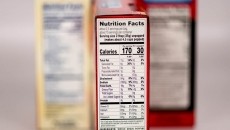Why did Americans get so fat, so fast?
One of the liveliest sessions at FNCE was delivered by Dr Jim Painter, RD, professor at the school of family and consumer sciences at Eastern Illinois University; and nutrition consultant Elizabeth Ward, MS, RD.

Addressing the issue of how Americans got so fat, so fast, Dr Painter said the answer was simple: Food is everywhere, it’s in larger portions, and we have completely lost track of how much we’re eating.
While other factors such as sedentary lifestyles and stress were clearly factors, we’ve been stressed and pretty sedentary for 20 years, he argued, “so that’s not what’s changed”.
New research he is working on explores practical ways restaurants can help people manage their food intake and keep offering ‘value’ to consumers that have become accustomed to huge portions, for example by bringing out a ‘to-go’ box with the food when it is served (which encourages diners to box half of it up first), or by serving half on a plate and the rest in the box.
He is also working on studies to explore how a 16oz soda ban might impact consumer behavior as the lawyers continue to argue over the legal status of NYC Mayor Bloomberg’s proposed ban.
Change habits as well as minds
Ward, meanwhile, said that US consumers meet the dietary guidelines on average on just seven days out of 365 (less than 2% of the time), which suggested that current strategies to encourage people to eat better are not working.
You can educate people about what they should be eating until you are blue in the face, she said, but the key is changing people’s habits, which are ingrained, and the biggest barrier to progress.
What we do know from data about people that have lost weight and kept it off is that they typically weigh themselves once a week, exercise daily, and eat breakfast, she said, noting that concrete advice or goals (I’ll eat a bowl of oatmeal for breakfast each day with blueberries or a banana) is more effective that abstract advice/goals (I need to eat more fiber/fruits and vegetables).



























